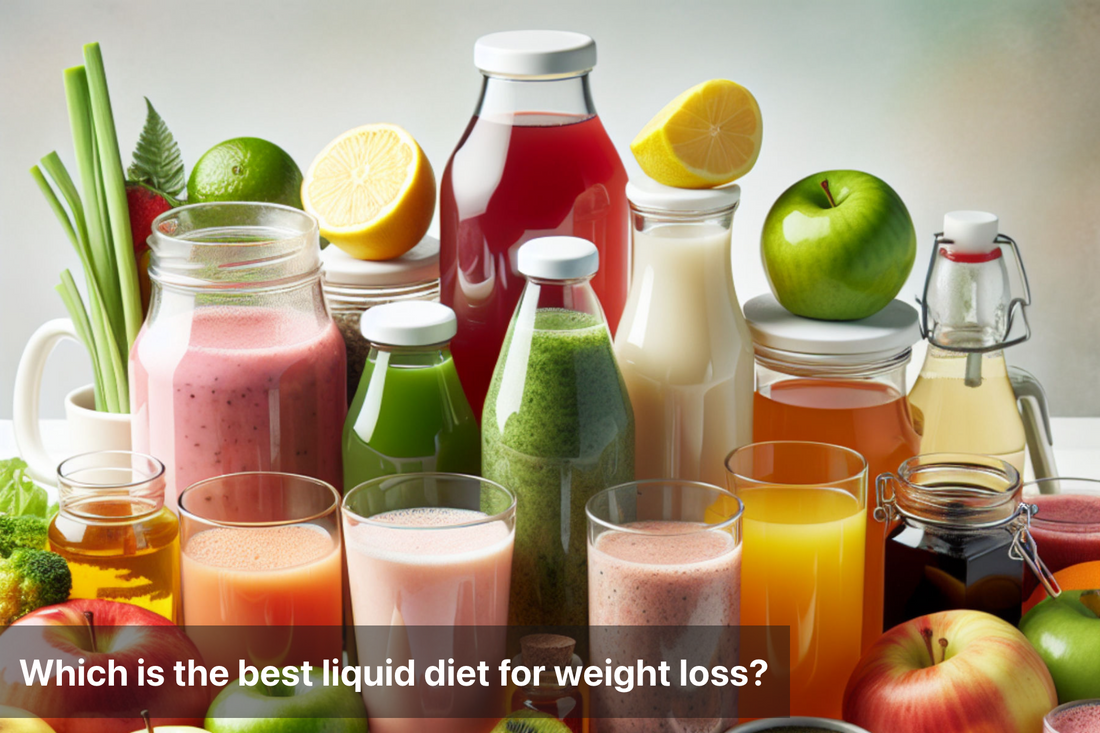
Which is the best liquid diet for weight loss?
Share
Liquid diets have gained widespread attention as a strategy for weight loss. Essentially, a liquid diet involves replacing one or more meals with nutrient-rich liquids, such as shakes, soups, or juices. The primary goal of this approach is to reduce calorie intake while still obtaining the nutrients necessary for health.
The science behind them is clear: liquid meals are often lower in calories than solid food options, yet they can still provide essential vitamins and minerals. Many people find that these diets can help them feel full, thanks to the volume and hydration they offer.
However, it’s crucial to approach liquid diets with caution. They should not be viewed as a long-term solution but rather as a temporary weight loss method. It’s important for anyone considering this approach to consult with a healthcare provider to ensure that nutritional needs are met. Overall, a liquid diet can facilitate weight loss, but understanding how it works and ensuring it's suitable for you is key to any successful diet plan.
Types of Liquid Diets
A liquid diet consists of beverages, soups, and shakes designed to replace solid meals. These diets are generally low in calories and easy to digest, making them an appealing option for short-term weight management. They can be categorized into the following:
Clear Liquid Diet: Composed of broths, clear juices, and gelatin. Often used medically before or after procedures.
Full Liquid Diet: Includes all clear liquids plus milk, smoothies, and strained soups.
Meal Replacement Shakes: Commercially available shakes designed to provide balanced nutrition while controlling calories.
Detox Juices or Smoothies: Made from fruits, vegetables, and other detoxifying ingredients, focusing on cleansing the body.
Nutritional Profile of a Typical Liquid Meal Replacement (Per 250mL Serving)
Health Coach Pooja Shinde (MSc. Nutrition, food science & technology — diabetes educator) says "Sip smart, lose weight—liquid diets are the refreshing shortcut to a healthier lifestyle!"
Nutrient |
Amount |
|---|---|
Calories |
200-250 kcal |
Protein |
15-20 g |
Carbohydrates |
25-30 g |
Sugars |
10-15 g |
Fiber |
3-5 g |
Fats |
5-10 g |
Vitamin A |
20% DV |
Vitamin C |
25% DV |
Calcium |
20% DV |
Iron |
15% DV |
The actual nutritional content varies based on the type of liquid diet you choose. A well-balanced liquid diet should provide essential nutrients to prevent deficiencies.
Benefits of a Liquid Diet for Weight Loss
When considering a liquid diet for weight loss, it's essential to understand the nutritional aspects involved.
Calorie Control
Liquid diets help control calorie intake by providing pre-measured servings, reducing the risk of overeating.Convenience
Pre-packaged meal replacements or smoothies are easy to prepare and consume, making them ideal for busy schedules.Boosts Hydration
Many liquid diets incorporate water-rich ingredients, promoting hydration while keeping you full.Improved Digestion
Liquid meals are easy on the digestive system, giving the gut a break and reducing bloating.Rapid Weight Loss
Due to their low-calorie nature, liquid diets can result in quick weight loss when followed for short periods.
Risks and Considerations
While liquid diets can be effective for weight loss, they may pose risks if not carefully planned:
Nutritional Deficiencies: Prolonged use can lead to a lack of essential nutrients.
Hunger and Cravings: A lack of solid food may lead to increased hunger.
Loss of Muscle Mass: Inadequate protein intake may cause muscle loss.
Unsustainable Results: Rapid weight loss from liquid diets can be difficult to maintain once solid foods are reintroduced.
Consult a healthcare provider before starting a liquid diet, especially for extended periods.
Comparison of Popular Liquid Diets
Diet Type |
Calories |
Protein |
Fiber |
Best For |
|---|---|---|---|---|
Meal Replacement Shakes |
200-300 |
15-20 g |
3-5 g |
Balanced nutrition |
Green Smoothies |
150-250 |
5-10 g |
5-7 g |
Detox and hydration |
Bone Broth Diet |
40-50 |
6-10 g |
0-1 g |
Low-calorie cleansing |
Clear Liquid Diet |
<100 |
0-2 g |
0 g |
Medical preparation |
Juice Cleanse |
100-200 |
0-2 g |
1-3 g |
Short-term detox |
Summary
A liquid diet for weight loss can be an effective option for some individuals seeking to shed pounds. Throughout this discussion, we've explored various aspects of liquid diets, including their types, benefits, and potential drawbacks. It’s clear that these diets often provide a structured approach to eating, making it easier to control calorie intake and manage portion sizes.
However, not everyone will find a liquid diet suitable for their lifestyle or health goals. Individuals with certain medical conditions, pregnant women, or those who have a history of eating disorders should approach this diet cautiously. It’s essential to listen to your body and recognize what works best for your health.
Before starting a liquid diet, consulting with a healthcare professional is crucial. They can help you assess your nutritional needs and ensure that a liquid diet won't compromise your overall health. Remember, successful weight loss should be about finding a sustainable approach that aligns with your personal preferences and lifestyle. Prioritizing your well-being will ultimately lead to better results and improved health.
FAQs
1. Can I follow a liquid diet long-term?
No, liquid diets are not recommended for long-term use as they may lead to nutrient deficiencies. They are best used as short-term solutions.
2. How much weight can I lose on a liquid diet?
Weight loss depends on the calorie deficit and the duration of the diet. Typically, individuals lose 2-4 pounds per week.
3. Is a liquid diet safe for everyone?
No, pregnant or breastfeeding women, individuals with chronic illnesses, and those with eating disorders should avoid liquid diets without medical supervision.
4. Can I exercise while on a liquid diet?
Yes, but stick to light or moderate exercise as your energy levels may be lower than usual.
5. What should I eat after completing a liquid diet?
Reintroduce solid foods gradually, starting with soft, easily digestible options like oatmeal, steamed vegetables, and lean proteins.


